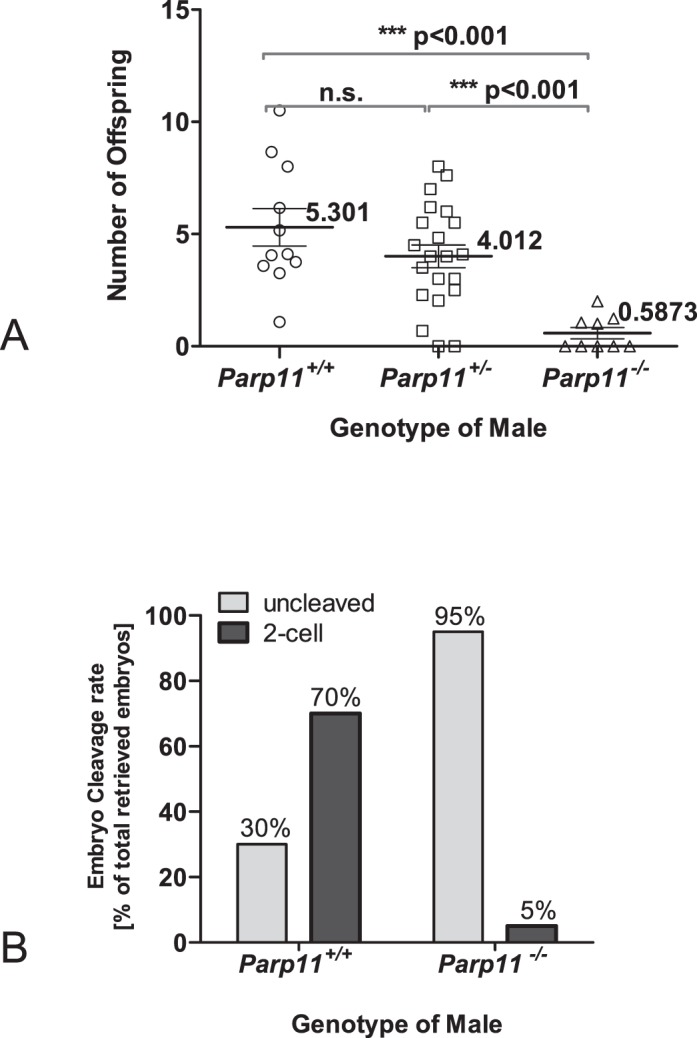FIG. 5.

Fertility defect of male mice lacking Parp11. A) Mean number of live offspring produced by one male per female, normalized to 1 mo of breeding time. Mean values (numbers) with SEM are given for each genotype (with Parp11+/+, n = 11; Parp11+/−, n = 21; Parp11−/−, n = 9 individual males). Statistical significance was calculated by Mann-Whitney tests between each group as well as ANOVA followed by Bonferroni multiple comparison correction. Five of the nine Parp11−/− males were infertile, and the remaining four males sired very few and small litters. Average numbers of offspring born from control wild-type male/ Parp11−/− female pairings were not statistically different from those of wild-type control couples (not plotted). B) Reduced fertilization potential of Parp11−/− sperm. Percentages of 2-cell embryos, retrieved at 1.5 days postcoitum (dpc) after natural mating of either wild-type or Parp11−/− males with superovulated wild-type females are indicated above the graph bars; numbers of embryos and animals are listed in Table 1. Fisher exact test indicates a highly significant difference between the genotypes (P < 0.0001).
